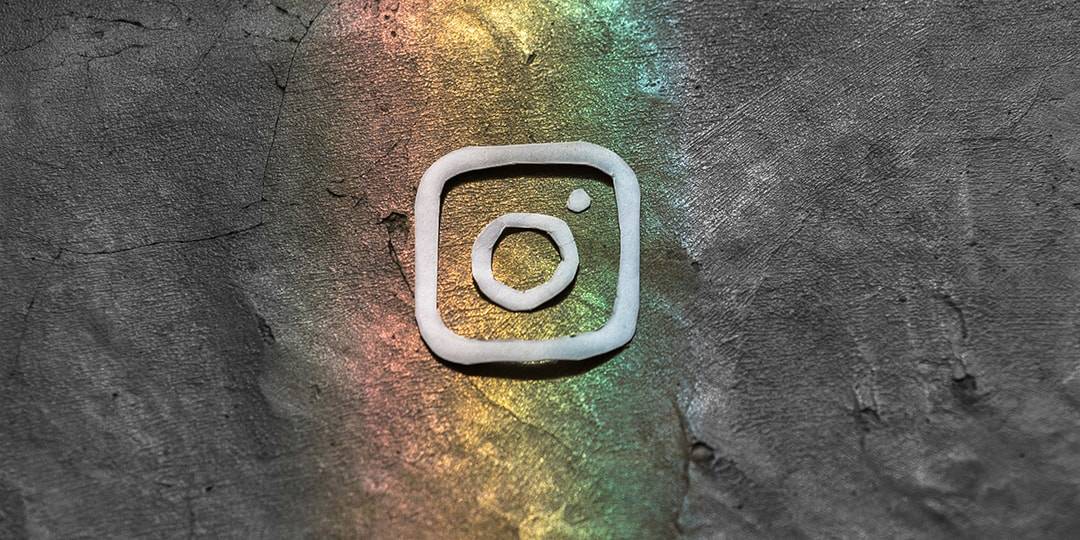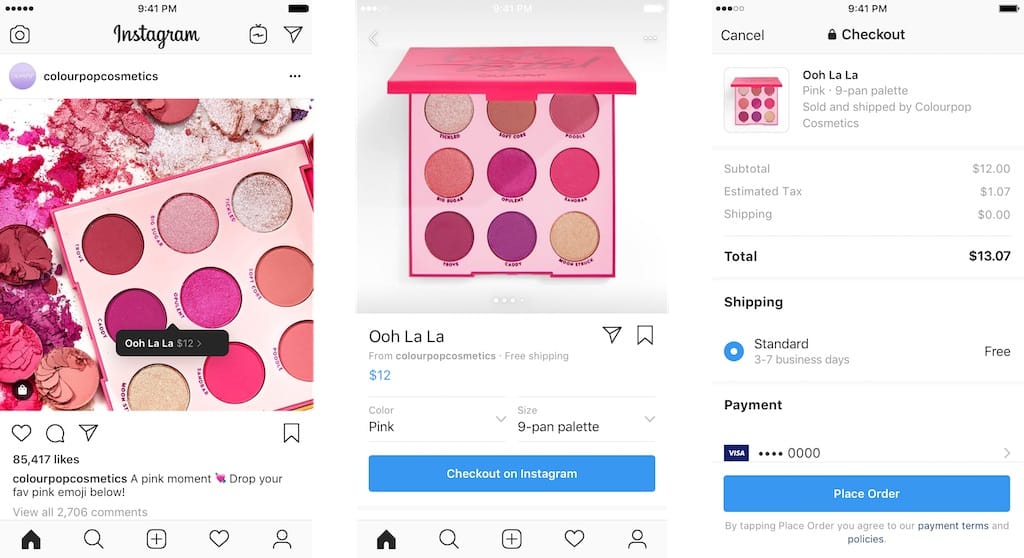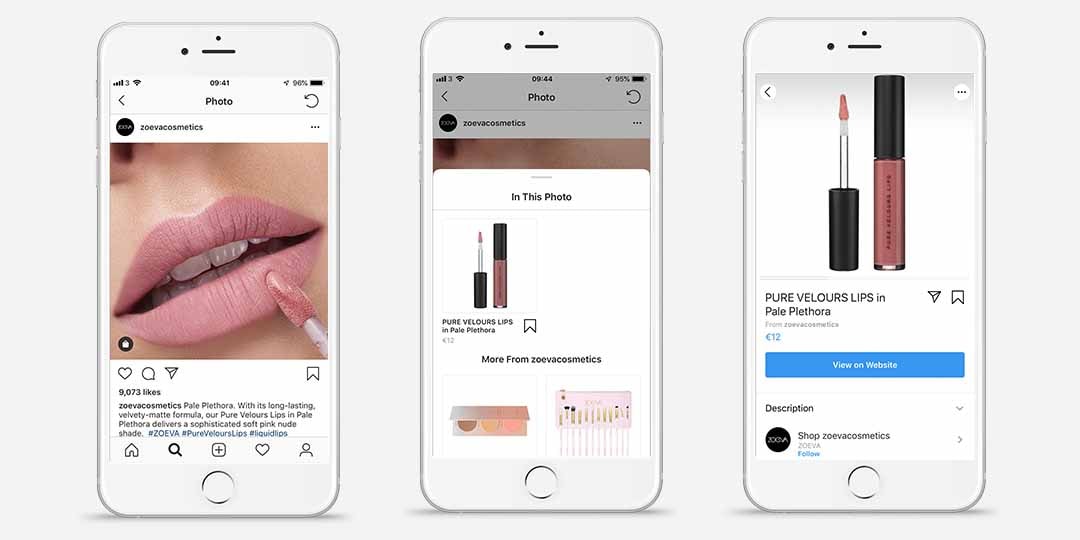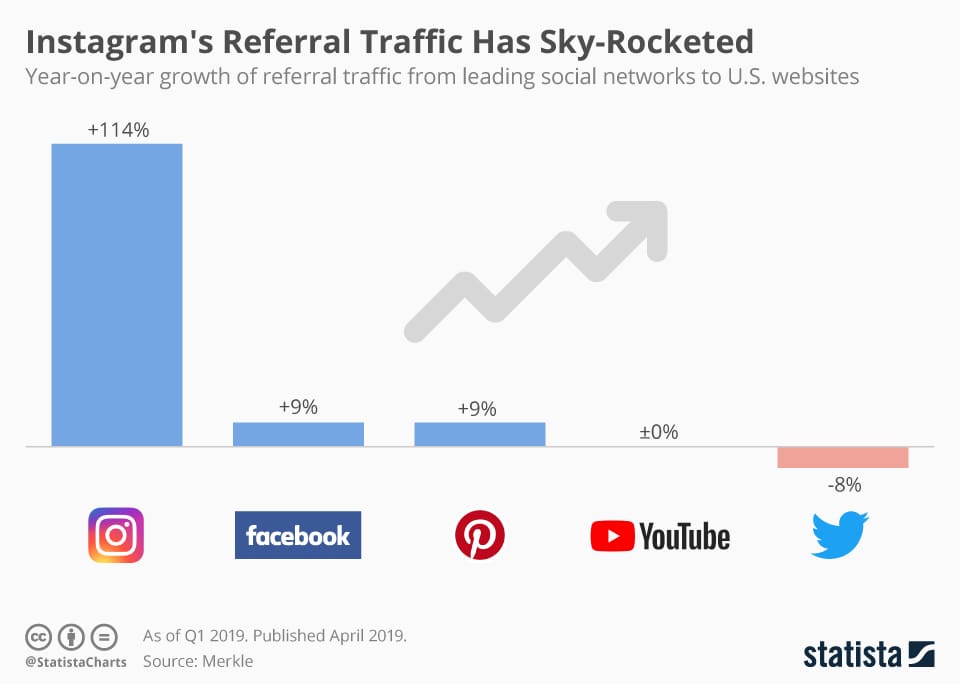5 outstanding questions about how Instagram Checkout works

Instagram recently announced their new Checkout beta-feature, the latest in the company’s pivot to ecommerce. The move was praised as a great win for users’ shopping experience. But it remains unknown how Checkout will work at Instagram’s massive 1 billion+ user scale. Here are 5 vital questions that will determine whether businesses will and should embrace Instagram Checkout.
On March 19th, Instagram announced a beta feature called Instagram Checkout, marking another step in the company’s drive towards becoming an ecommerce powerhouse.
Instagram Checkout allows users to view and purchase products, as well as contact brands about their orders, all directly within the app.

Checkout builds on Instagram’s Shoppable Tags, which first debuted in 2016. Shoppable Tags allowed brands to tag products featured in images or add product stickers to their stories. When users clicked on the tag, they would see the price along with a “View on Website” button which linked directly to the product page and would open the brand’s website on an in-app browser. The Checkout feature closes the loop by containing the entire customer flow within Instagram.

Over the next two years, Instagram slowly expanded Shoppable Tags to more brands. In March 2019, the company reported that 130 million Instagram users per month were interacting with the brand’s product tags. With Shoppable Tags driving traffic to brand websites, it’s no wonder that referral traffic from Instagram has sky-rocketed.

Source: Statista
As of June 2019, Instagram Checkout is still in beta testing, with a select set of brands participating in initial testing. Only users in the U.S. can shop with it.
But Instagram is already betting big on Checkout. In April, just a month after the first announcement, the company expanded Checkout to include prominent influencers. Instagram is known for being a platform made for influencers and influencer marketing. With their $5.67 billion in influencer marketing business, this was a natural next step for the company.
But, will Instagram Checkout survive beta-testing and gain general acceptance from both businesses and Instagrammers?
Twitter discontinued its “Buy” button in 2017 after it failed to gain traction with brands and customers. Instagram might hope user behavior with its Shoppable Tags bodes well for Checkout, but that remains to be seen.
TechCrunch has already confirmed that Instagram will be taking a cut of purchases from merchants. And brands will need to give up business and data control to Instagram.
Will Instagram Checkout live up to the hype to make it worth it? And an even more basic question is, will it work at Instagram’s user scale?
For the past decade, we've specialized in working with brands running collection drops, product launches, and viral campaigns, on Instagram and in online retail. Here are 5 important things we still don't know about how Instagram checkout works. And they will have a major impact on whether businesses accept the feature or whether it goes the way of Twitter Buy—or worse.
1. How will Instagram handle high-volume ecommerce transactions?
Your first reaction might be, "it's Instagram, it has over a billion users, of course it will be able to handle high-volume ecommerce transactions". But remember two key facts:
- The technical demands of a user browsing an Instagram feed is entirely different than a user entering credit card information and buying a product, and
- Year after year, even the biggest names in ecommerce fail
Payment is a problem
Payment gateways are a prime bottleneck in the ecommerce flow. The gateways perform a variety of technical checks and verifications to process secure financial transactions.
The latency of completing a transaction can slow from 2-3 seconds on your average day to 5-10 seconds at high traffic times. Plus, payment gateway providers have a finite number of transactions they can handle.
That’s why on busy days, the payment system is so often the first point of failure for online retailers. Nothing that Instagram does to scale their own infrastructure can change this.
Ecommerce giants fail each year
Even Amazon, whose AWS division is the industry leader in server scaling services, crashed on their 2018 Prime Day. Amazon’s website had issues for several hours due to a breakdown in their auto-scaling. And big sale days like Black Friday see big-name retailers buckling under the strain of thousands of web visitors. If their failure tells us anything, it's that the demands on ecommerce infrastructure get exponentially more complex the higher traffic increases.
With 1 billion pairs of thumbs tapping through their app, does Instagram have the infrastructure set up to deliver Instagram Checkout on a full scale?
2. How will Instagram Checkout handle limited-inventory drops?
Product drops, limited-edition releases, and other limited-inventory sales are notoriously difficult to get right. The devil is in the technical details.
When I go for a pair of Nikes, the inventory database places a lock on the item. It treats that product as if it's unavailable, either until I buy it or until the cart timeout expires. During that time, this fact needs to be reflected in the inventory that all other shoppers see.
If there were just one pair of Nikes left and the inventory system didn't update to show "Out of Stock" as soon as I started the buying process, the Nikes would end up overselling. That’s a mess no online retailer wants to have to explain to customers.
This is a complex juggling act for an ecommerce system. If the database isn’t functioning properly and these calls aren’t delivered at the speed of the requests, things go wrong. With any limited-inventory collection drop, Instagram Checkout will need to handle this complexity. If the products are available on both Instagram Checkout and your website, the complexity gets that much more extreme.
If you add a promotion of 500 pairs of sneakers to your Instagram Story and you have 200,000 followers, how are things going to work? Even if Instagram Checkout's system can handle the massive traffic, it becomes a race to the finish to see whose fingers can enter information fastest. This is not a fair way to run a sale and is certain to leave brand loyalists upset.
3. How will Instagram Checkout be protected from bots and resellers?
Bad bots love online retail
We know that bad bots account for over 21% of ecommerce traffic. And bots plague ecommerce releases in particular.
We live in a world in which Supreme shoppers pay $100 to two teenage botmakers just to have a shot at getting a $200 worth of brand merch. Resellers on eBay charge a 400% markup—or $1,471—for a pair of Yeezy sneakers.
Even politicians have caught on. On Black Friday 2018, U.S. lawmakers announced the Stopping Grinch Bots Act to try and use legislation to curb bots in online retail.
Bad bots set sights on Instagram
Until recently, Instagram bots have been used to gain followers and likes, as these would then translate into product endorsement deals. With Shoppable Tags, bot operators would still be directed to individual websites, each with their own bot protection mechanisms. Housing products across all the brand’s websites also prevented manipulation allowing for mass-purchases from one central point.
But Instagram Checkout represents a paradigm shift for hackers, bot operators, and other bad actors. Now users store their financial information in the app, and the purchase will all take place under one roof. This vastly expands the potential for harm.
We know already that Instagram has a fake account problem. In 2018, it was estimated that Instagram has over 95 million bot accounts.
Resellers and drop shippers could easily command a small army of fake accounts to buy up the hottest ecommerce products, just to turn around and resell them for huge markups.
More nefarious actors could even hack into legitimate accounts, scooping up limited-edition product on someone else’s dime.
Bad actors have already been targeting Instagram influencers, hacking into their accounts and demanding ransom to turn over the keys. Knowing the financial value their Instagram accounts represent, many ransomware victims have paid the hackers or resorted to white-hat hackers to regain control of their accounts. Instagram has been relatively helpless in the matter.
With their transformation into an ecommerce marketplace, Instagram’s bot problem is bound to get worse. It’s not a question of whether Instagram Checkout will attract the heavyweight bot operators and fraudsters, but how Instagram will handle this.
4. How much control will businesses have over the Instagram Checkout process?
From what we know so far, retailers will have less control and get less out of Instagram Checkout compared with customers who shop on their own websites.
Instagram owns the customer experience
For starters, Instagram owns the customer experience, from browsing to purchase. On their own websites, brands use time-tested strategies of upselling, cross-selling, and intelligent discounting to generate huge ROI (Amazon gets 35% of revenue from cross-selling alone). Instagram has recently added the “More From” tab within their shopping feature. But for a retailer with a large product catalog, they won’t have anywhere near the same ability to create their own customer experiences.
Brands get the bare minimum
But the biggest disadvantage of Instagram Checkout for businesses is that Instagram will only share information required to complete the order. Crucially, customers must actively opt-in to share their email address with the brand.
There’s good reason all sensible ecommerce sites require a shopper’s email for ordering. Email marketing has a proven track record of results, with researchers finding an average 3,800% return on investment. Email marketing is fundamental for both customer acquisition and retention. Email is the most important channel for customer acquisition and retention for 81% and 80%, respectively, of small and medium-sized businesses.
Depending on how many shoppers opt in, businesses could end up with a two-tiered customer database. Website shoppers will have complete information profiles. Instagram Checkout shoppers will be comparatively empty.
It costs businesses anywhere from 5-25x as much to acquire a new customer as to retain an existing one. With Instagram Checkout purchases lacking in key information, brands won’t be able to reap this benefit to the same extent. Time will tell if the level of conversions on Instagram Checkout offsets this financial downside.
5. What will happen to the brands that don't implement Instagram Checkout?
Let’s assume Instagram Checkout is a success, and the company rolls out the feature to most brands. What happens to the brands that aren’t allowed to use Checkout (e.g. based on geography or size) or that choose not to use the feature?
Instagram has confirmed that engaging with Checkout will impact the algorithm that determines a user’s Instagram feed. Depending upon how the algorithm weights Checkout interactions, this could mean brands not implementing Checkout would have their content downranked and disadvantaged. Instagram could use this as a tactic to push brands into its revenue stream.
After the Instagram Checkout announcement, The Atlantic called Instagram “the new mall”. But the comparison is only partly accurate.
Yes, the appeal of malls to retailers was that they promised a destination with a steam stream of foot traffic. With over 1 billion users, Instagram lives up to that promise.
But in a mall, retailers could create their own customized experiences. They oversaw the store’s aesthetic. They knew their existing customers and collected information on new ones. And the mall didn’t take an additional cut of each purchase.
For brands, knowing whether Instagram Checkout makes business sense relies in large part on how it handles the outstanding questions we’ve reviewed here.